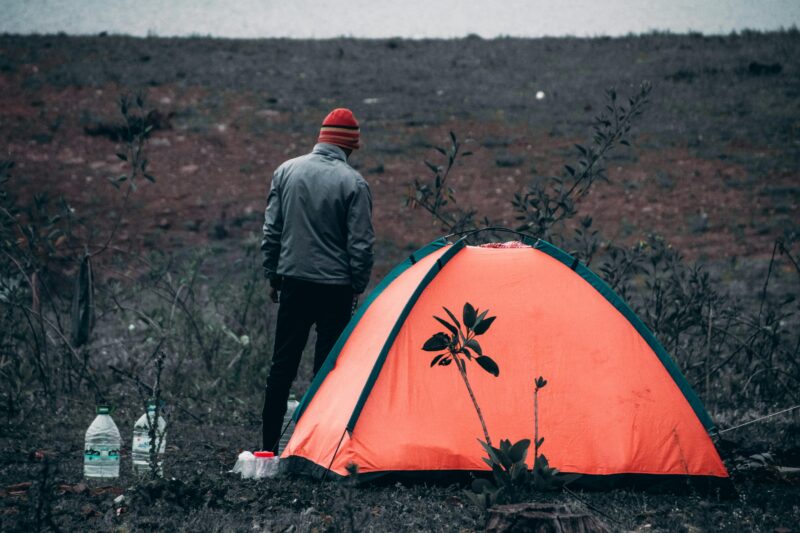Camping and foraging are two of the most exhilarating outdoor activities that allow individuals to immerse themselves in nature and gain a deeper appreciation for the natural world. While camping offers the thrill of sleeping under the stars and reconnecting with the great outdoors, foraging adds an element of adventure and self-sufficiency by teaching people how to identify and responsibly harvest edible plants from their surroundings.
Benefits of Identifying Edible Plants in the Wild
Identifying and consuming edible plants in the wild can provide a wealth of benefits, both for the individual and the environment. Firstly, it can be a valuable survival skill, ensuring that individuals have access to a reliable source of nourishment in the event of an emergency or unexpected situation. Secondly, it can lead to a greater understanding and appreciation of the natural ecosystem, as foragers learn to recognize the unique characteristics and growth patterns of various plant species. Finally, the act of foraging can be a rewarding and meditative experience, providing a sense of connection to the land and a deeper understanding of the cycles of nature.
Safety Precautions when Foraging
While foraging can be a rewarding and educational experience, it is essential to take proper safety precautions to ensure a safe and responsible outing. Some key considerations include:
- Proper identification: Ensure that you can accurately identify any plant before consuming it, as some species can be toxic or cause allergic reactions.
- Avoiding contaminated areas: Steer clear of areas that may have been exposed to pesticides, heavy metals, or other pollutants, as these can be harmful if ingested.
- Obtaining necessary permits: In some areas, foraging may be restricted or require a permit, so it’s important to research and comply with local regulations.
- Leaving no trace: Practice sustainable foraging techniques, only taking what you need and leaving the rest to ensure the continued health of the ecosystem.
Common Edible Plants Found in the Wild
The world of wild edible plants is vast and diverse, with a wide range of species that can be safely consumed. Some of the most common and easily identifiable include:
- Dandelions (Taraxacum officinale): The entire plant, from the leaves to the flowers and roots, can be eaten and are rich in vitamins and minerals.
- Cattails (Typha spp.): The young shoots, pollen, and rhizomes of cattails can be eaten and are a good source of carbohydrates.
- Clover (Trifolium spp.): The leaves and flowers of various clover species can be added to salads or used as a tea.
- Blackberries (Rubus spp.): The juicy, sweet berries of blackberry plants are a delicious and nutrient-dense treat.
- Chickweed (Stellaria media): The tender leaves and stems of chickweed can be eaten raw or cooked and are high in vitamins and minerals.
How to Identify Edible Plants in the Wild
Identifying edible plants in the wild requires a combination of knowledge, observation, and caution. Some key tips include:
- Learn the plant’s characteristics: Study the plant’s leaves, stems, flowers, and other distinguishing features to ensure accurate identification.
- Consult field guides and online resources: Utilize reliable sources of information, such as field guides and reputable websites, to cross-reference your findings.
- Start with small portions: When trying a new plant, consume only a small amount at first to ensure it does not cause any adverse reactions.
- Avoid plants with milky sap or bitter/unpleasant tastes: These can be indicators of toxicity, so it’s best to steer clear.
- Focus on common, well-known species: Start with plants that are widely recognized as edible, such as those mentioned in the previous section, to build your confidence and knowledge.
Beach Camping in Batangas: A Perfect Spot for Foraging
One of the best places to experience the joys of camping and foraging is in Batangas, a province located just south of Manila, Philippines. With its stunning beaches, lush forests, and diverse ecosystems, Batangas offers a wealth of opportunities for outdoor enthusiasts to explore and discover edible plants in the wild.
One particularly picturesque spot for beach camping and foraging is the town of Nasugbu. Here, campers can pitch their tents along the pristine shores, lulled to sleep by the gentle waves and the sound of the wind rustling through the nearby mangrove forests. During the day, they can venture out and explore the surrounding areas, identifying and responsibly harvesting a variety of edible plants, such as sea grapes, beach spinach, and even the elusive sea asparagus.
Car Shower Tents: A Convenient Solution for Camping Hygiene
While the joys of camping and foraging are undeniable, the need for proper hygiene can sometimes be a challenge, especially in remote or off-the-grid locations. Fortunately, the advent of car shower tents has provided a convenient solution for campers who want to maintain their cleanliness and comfort while enjoying the great outdoors.
These portable, easy-to-set-up structures allow campers to take a warm shower, even in the middle of the wilderness, without the need for a permanent bathroom facility. With features like privacy screens, water-resistant materials, and adjustable height, car shower tents offer a practical and discreet way to maintain personal hygiene during camping trips, ensuring that foragers can stay refreshed and ready to explore their surroundings.
Wildlife Encounters while Foraging
One of the most exciting and unpredictable aspects of foraging in the wild is the potential for encountering various wildlife species. From curious birds and scurrying rodents to the occasional larger predator, these wildlife encounters can be both thrilling and humbling, reminding foragers of the delicate balance that exists within the natural ecosystem.
When foraging in areas with known wildlife populations, it’s essential to exercise caution and maintain a respectful distance from any animals you may encounter. Avoid approaching or feeding wildlife, as this can disrupt their natural behaviors and potentially put you in harm’s way. Instead, observe from a safe distance, taking note of the animal’s characteristics, behaviors, and the role it plays within the larger ecosystem.
In the event of a more concerning wildlife encounter, such as a close encounter with a larger predator, it’s important to remain calm and follow established safety protocols. This may involve slowly backing away, making loud noises to deter the animal, or seeking shelter in a secure location. By understanding and respecting the presence of wildlife, foragers can safely and responsibly explore the natural world, gaining a deeper appreciation for the delicate balance of life that exists all around them.
Final Thoughts
Camping and foraging are two of the most enriching and rewarding outdoor activities, allowing individuals to connect with nature, develop valuable survival skills, and gain a deeper understanding of the natural world. By learning to identify and responsibly harvest edible plants in the wild, foragers can not only ensure their own nourishment but also contribute to the overall health and sustainability of the ecosystems they explore.
Whether you’re planning to go beach camping in Batangas or embarking on a foraging adventure in your local wilderness, remember to prioritize safety, respect the environment, and embrace the thrill of discovering the hidden bounty that nature has to offer. With the right knowledge, preparation, and a sense of adventure, you can unlock a world of culinary and educational possibilities that will enrich your outdoor experiences for years to come.



